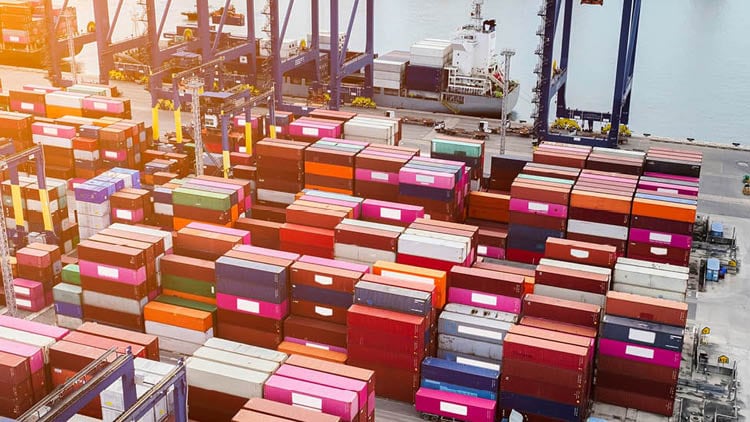Background
With continued developments in US trade policy, please see this week’s key updates in our latest round-up on tariffs, global tax and beyond.
The week in summary
EU-US trade deal specifics
On 27 July 2025, President of the European Commission, Ursula von der Leyen, and President of the United States, Donald J. Trump, reached a bilateral agreement on tariffs and trade relations between the European Union and the United States. Following this, on 31 July, President Trump signed an Executive Order entitled “Further Modifying the Reciprocal Tariff Rates” confirming that a rate of 15% would be applied to all EU goods from 7 August.
This Executive Order did not provide the comprehensive details of the deal or any products which were to be excluded. As of Thursday morning, no further Executive Order has been published and thus, the rate of 15% now applies to all EU goods (notwithstanding those that were previously subject to an exemption, or where specific rates are being applied, under previous Executive Orders).
As contained in a press release issued by the EU on 29 July and confirmed through the Executive Order issued on 31 July, EU goods are now subject to the following conditions;
US tariff measures – effective 7 August
A 15% import duty rate will apply to most EU products imported into the US.
This rate includes the Most Favoured Nation (MFN) tariff and replaces any additional duties (exception for steel and aluminium).
Where the MFN rate already exceeds 15%, the higher MFN rate will apply instead of the 15%.
The EU press release also contained information on the specific exemptions which would apply as part of this deal.
However, given the lack of any further publication from the US side implementing these exemptions, at present this remains a proposed list.
Tariff exclusions and specific arrangements
Tariffs on steel and aluminium remain at 50%. However, the two parties work towards establishing tariff quotas which would allow a quantity of these products to be imported at a lower duty rate.
Tariffs on cars and car parts, previously up to 25% plus a 2.5% MFN rate, will be reduced in line with the 15% ceiling.
Tariffs on certain chemicals, generic drugs, and natural resources will return to pre-January levels.
The EU and US plan to continue discussions on expanding the list of products subject to adjusted tariffs.
Aircraft and aircraft parts will revert to pre-January levels
Pharmaceuticals
The initial commentary from the EU, following the agreement reached between Commission President von der Leyen and President Trump, indicated that pharmaceuticals would be included within the 15% ceiling, should Section 232 measures be implemented.
However, recent comments made by President Trump seemed to run counter to this suggesting that tariffs on pharmaceuticals, when imposed, would be outside the scope of the recent EU – US agreement. In comments made on Tuesday, President Trump stated;
“We’ll be putting an initially small tariff on pharmaceuticals, but in one year – one and a half years, maximum – it’s going to go to 150 per cent and then it’s going to go to 250 per cent because we want pharmaceuticals made in our country,”
Of particular worry for Irish companies, President Trump specifically noted Ireland, along with China, as a key manufacturer to be targeted, stating;
“They [pharmaceutical companies] make a fortune with pharmaceuticals, and they make in China and Ireland and everything else.”
“This is a, you know, this is a separate class than the 15 per cent tariffs on sort of everything. These are excluded classes, I like to call them, like steel, aluminium, made in our country,”
EU trade measures
In response to the agreement with the US, the EU has committed to lowering the MFN rate for industrial goods from the US to 0% with a projected saving of approximately €5 billion annually in duties for EU importers. The details of goods to be included within this are yet to be finalised.
Additionally, the EU has confirmed the suspension of retaliatory tariffs, due to come into effect on 7 August, for a period of 6 months.
EU vs UK difference of approach
With the implementation of the EU – US Trade Agreement, a divergence in tariff rate has once again presented itself between the EU and the UK for goods exported to the US. While generally the UK securing a rate of 10% will prove to be more beneficial that the corresponding EU agreement, unlike the EU agreement, this 10% is not a ceiling and will be stacked on top of any MFN rates which are currently in place.
In practice, this could mean that for certain products which have an MFN rate of 5% or above, provided they are not separately catered for, the UK will be at a disadvantage in comparison to the EU and UK products will face a higher effective tariff rate when imported into the EU.
Rest of world
As noted above, on 31 July, President Trump signed an Executive Order entitled “Further Modifying the Reciprocal Tariff Rates” confirming the specific rates of duty which will be applied by the US to its trading partners. While the EO contains very little specific detail, it does confirm that the new tariff rates will be implemented from 7 August. For countries which are not listed, the 10% baseline rate will continue to apply.
Table of US tariffs for each country
| Country | % | Country | % | Country | % |
| Brazil | 50% | Canada | 35% | China | 30% |
| Mexico | 25% | EU | 15% | Syria | 41% |
| Laos | 40% | Myanmar (Burma) | 40% | Switzerland | 39% |
| Iraq | 35% | Serbia | 35 % | Algeria | 30% |
| Bosnia and Herzegovina | 30% | Lybia | 30% | South Africa | 30% |
| Brunei | 25% | India | 25% | Kazakhstan | 25% |
| Moldova | 25% | Bangladesh | 20% | Sri Lanka | 20% |
| Taiwan | 20% | Vietnam | 20% | Cambodia | 19% |
| Indonesia | 19% | Malaysia | 19% | Pakistan | 19% |
| Philippines | 19% | Thailand | 19% | Nicaragua | 18% |
| Afghanistan | 15% | Angola | 15% | Bolivia | 15% |
| Botswana | 15% | Cameroon | 15% | Chad | 15% |
| Costa Rica | 15% | Ivory Coast | 15% | Democratic Republic of the Congo | 15% |
| Ecuador | 15% | Equatorial Guinea | 15% | Fiji | 15% |
| Ghana | 15% | Guyana | 15% | Iceland | 15% |
| Isreal | 15% | Japan | 15% | Jordan | 15% |
| Lesotho | 15% | Liechtenstein | 15% | Madagascar | 15% |
| Malawi | 15% | Mauritius | 15% | Mozambique | 15% |
| Nambia | 15% | Nauru | 15% | New Zealand | 15% |
| Nigeria | 15% | North Macedonia | 15% | Norway | 15% |
| Papua New Guinea | 15% | South Korea | 15% | Trinidad and Tobago | 15% |
| Turkey | 15% | Uganda | 15% | Vanuatu | 15% |
| Venezuela | 15% | Zambia | 15% | Zimbabwe | 15% |
| Falkland Islands | 10% | UK | 10% |
Brazil/Canada/Switzerland specific rates
Starting Friday, August 7, Brazilian exports to the United States will be hit with a steep 50% tariff, one of the highest imposed by President Donald Trump. However, Latin America's largest economy is unlikely to suffer significantly, thanks to widespread exemptions and its increasingly robust trade relationship with China.
Furthermore, On Thursday, 31 July, President Trump signed an executive order raising tariffs on Canadian imports from 25% to 35% for all goods not covered under the US-Mexico-Canada Agreement (USMCA), according to a statement from the White House.
To prevent circumvention of the new tariffs, the order also imposes a transshipment levy of 40% on goods rerouted through third countries, as outlined in an official White House fact sheet.
Canadian Prime Minister Mark Carney dismissed speculation about retaliatory trade measures on Tuesday, emphasising instead a strategic shift toward reducing Canada's economic dependence on the United States, stating in a press briefing at a lumber mill in West Kelowna, British Columbia:
“We can no longer fully depend on what has historically been our most important trading partnership to secure our prosperity. That’s why we’re prioritising domestic resilience and expanding global opportunities for Canadian businesses and workers.”
Notwithstanding a meeting between Swiss President Karin Keller-Sutter, economy minister Guy Parmelin and US Secretary of State Marco Rubio, Switzerland has failed to convince US President Donald Trump to reduce the 39% rate which now applies to Swiss goods imported into the US.
De minimis - US ends exemption for low-value imports
On Wednesday, 30 July, The White House announced that the United States will suspend the "de minimis" exemption, which previously allowed low-value commercial shipments to enter the country tariff-free.
Under a new executive order signed by President Donald Trump, beginning August 29, packages valued at $800 or less, when shipped outside the international postal system, will be subject to all applicable duties with President Trump stating in the executive order issued:
“Many shippers go to great lengths to evade law enforcement and hide illicit substances in imports that go through international commerce”. The risk of “evasion, deception, and illicit-drug importation are particularly high for low-value articles that have been eligible for duty-free de minimis treatment.”
Packages shipped through the international postal system shall be subject to specific duty rates set out by Customs and Border Patrol, either applying the ad valorem duty, based on the effective IEEPA tariff rate applicable to the country of origin (e.g. 15% for shipments from the EU), or a fixed amount per item, varying by the effective IEEPA tariff rate.
Irish reaction
Tánaiste and Minister for Foreign Affairs, Simon Harris TD released a statement to the media this morning confirming the tariffs have begun and the EU is now subject to 15%, stating;
“It’s absolutely essential that we continue, at a European level, to engage with what is a framework agreement and seek to maximise the number of areas in which there can be zero-for-zero when it comes to tariffs.
“Whilst there are some areas that have already been agreed as exempt from tariffs between the US and the EU, I’m very eager to see more progress made in more areas, including for the drinks industry, which is an important part of the Irish economy.
“We’ll also need to continue to work in the time ahead to tease through the detail in relation to particular sectors. From a pharma point of view, my position remains the same, as does the position of the European Union. There is huge potential and scope for the EU and the US to work together in the interests of patients, their economies, and the pharma industry.
Irish businesses are still bracing for significant challenges under the new agreement. While the deal prevents a full reversion to WTO trading terms, industry leaders warn that the changes will introduce new costs and complexities for exporters and importers alike. Simon McKeever, chief executive of the Irish Exports Association, said:
“Irish exporters and importers will not have to operate under cumbersome and very expensive WTO rules. However, there will still be changes and increased costs to trade,”
The employers’ representative body, IBEC, has stated that a 15% tariff constitutes “a substantial burden for many industries” and has urged the Government to consider implementing support measures for vulnerable businesses, akin to those introduced during the Brexit transition.
We’re here to help you
Keeping up to date with US trade policies, trade agreements and new and existing tariff reviews which may lead to further tariff measures is crucial to assessing the risk to your supply chain and the impact these tariffs may have. Understanding your product portfolio and the impact that tariffs may have on your imports is an important first step. We are here to support your business with this analysis and navigating these choppy waters.
Specialist Tax Services
Helping businesses navigate risks and realise opportunities.
Contact us













Menu